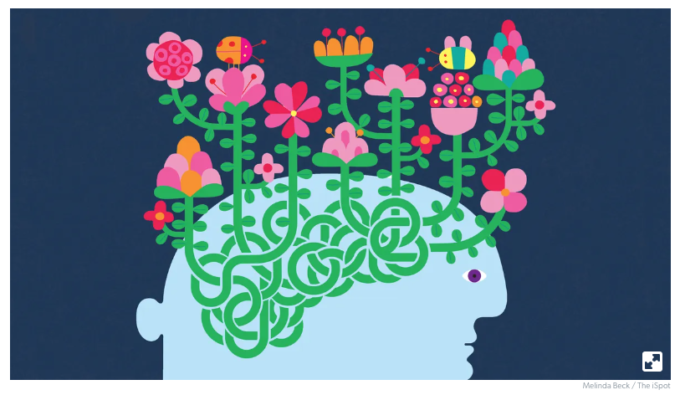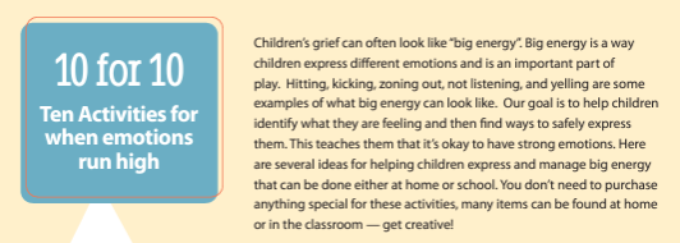
Emotional Awareness
Skill-building
Big Feelings
Loss involves big feelings. Big feelings can make us uncomfortable. If we can normalize the idea that “hard” feelings like anger, sadness, and fear are no different from “easy” feelings like happiness, hope, and gratitude, we can make huge strides to creating a supportive environment for each other as we navigate loss.
You can model emotional awareness by using feeling words in your own emotional expression.
As Community and Youth Development Advocate Alesia K. Alexander, LCSW, CT discusses in the video above, adults tend to move away from true feeling words and default to generic terms like, “I’m tired.” Instead, try using one of the 27 emotions that make up the human experience.
Kids need to see trusted adults navigate emotions
As adults, we’re often conditioned to repress or downplay our own big feelings—and the young people in our lives notice. By trying to “be strong” and act like nothing phases us, we may inadvertently communicate to kids that their feelings should be ignored. Not only is it okay for kids to see you navigate emotions, it's an essential part of their own emotional development.
Sharing What You Know
It's important to assure the young people in your life that feelings aren't good or bad, they're just information. Practice tuning into your own emotions and normalize naming them. You don't even need to draw attention to it, just let the kids and teens in your presence experience you sharing things like, "I had a meeting today that left me feeling kind of angry and a little anxious," or "I felt sad when my friend canceled plans on me." Leading by example is a great way to assure a young person that it's okay for them to experience their own big feelings.
Emotional Literacy Resources
The Feelings Garden
Description: A video to help children explore — and learn to take care of — different feelings.
Source: Sesame Workshop
Talking with Kids About Feelings
Description: Social-emotional learning can be part of your everyday activities!
Source: Sesame Workshop
Self-Management
Description: Learn how to teach children ways to manage their feelings and turn them into positive actions, including creating a calm and regulated environment, showing how to manage impulses, and discussing ways to resolve conflicts.
Source: PBS
Self-Awareness and Self-Management
Description: Explore how a better understanding of their own feelings and experiences can help children have better control of their actions.
Source: PBS
Self-Awareness
Description: Learn how you can help children develop self-awareness, the foundation of social-emotional learning, by teaching the vocabulary of emotions, and modeling behavior that supports self-awareness.
Source: PBS

Ideas for Teaching Children about Emotions
Description: The Center for Early Childhood Mental Health Consultation translates research in healthy mental development into materials that are available on this website.
Source: Georgetown University

How am I Feeling Today?
Description: A colorful poster features six cartoon dog facial expressions.
Source: NACG, Dougy Center

Fostering Emotional Literacy Begins With the Brain
Description: Teaching elementary students the neuroscience of emotions helps them understand their feelings and empowers them to respond with intentionality.
Source: Edutopia
Expressing Feelings with Words
Description: Give families the tools they need to talk about and work through big feelings.
Source: Sesame Workshop

Emotional Intelligence Quiz
Description: Facial expressions are a universal language of emotion, instantly conveying happiness, sadness, anger, fear, and much more. Reading these expressions is essential to compassion and empathy. Take this short quiz to measure your emotional intelligence.
Source: Greater Good Science Center
Coping with Big Feelings
Description: Encourage kids to talk with grown-ups when they feel sad.
Source: Sesame Workshop

All About Emotions
Description: Use these resources to help children understand how to identify, label, and express feelings.
Source: PBS Kids

10 for 10: Ten Ideas for When Emotions are Running High
Description: You can use this explanation sheet along with the 10 for 10 worksheet that children can use to pick an activity to express “big energy.” Adults have “big energy” too, so don’t forget to do some of these activities for yourself!
Source: NACG, Dougy Center
